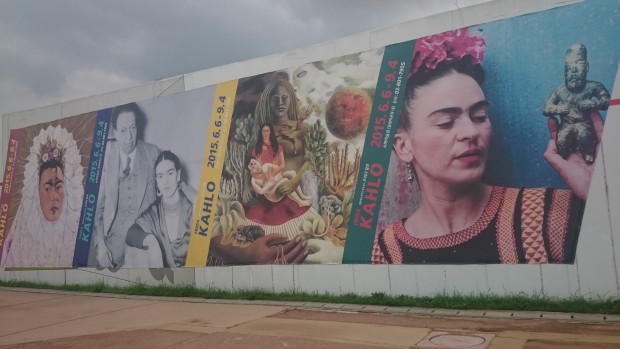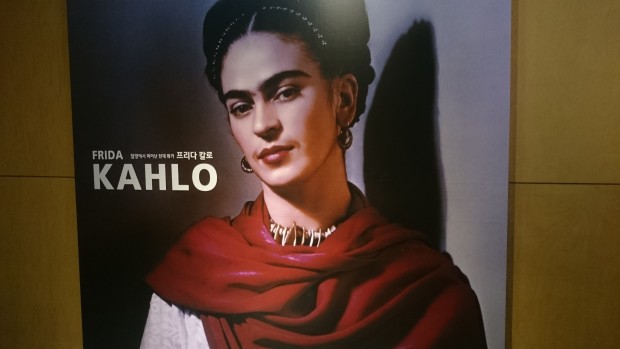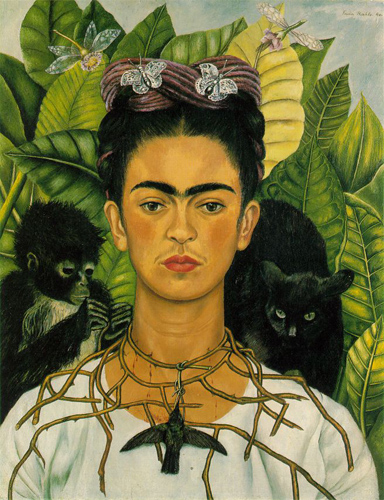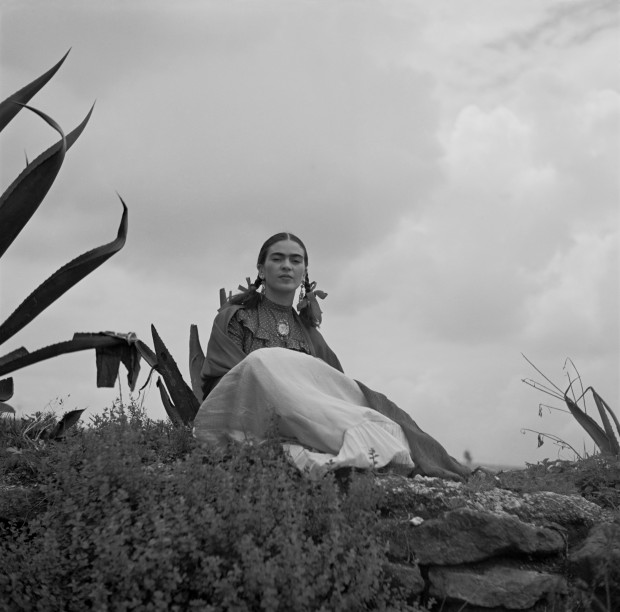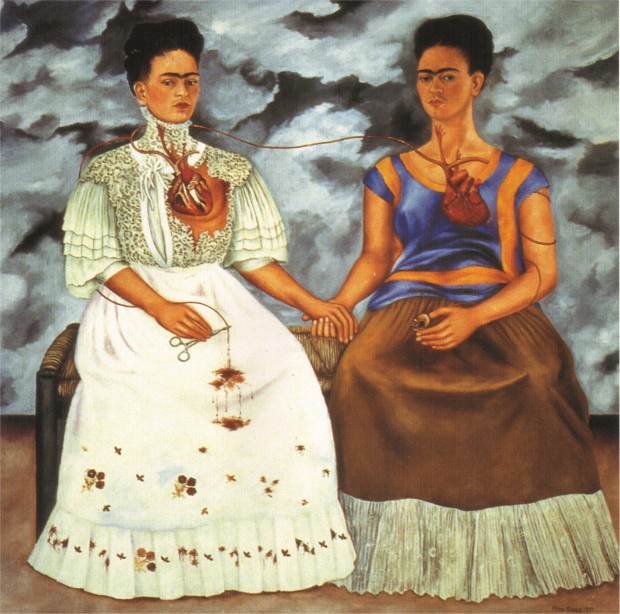Frida Kahlo: artist born out of despair
Frida Kahlo, one of Mexico‘s most famous painters, is exhibited in Korea for the first time in an exhibition called “Frida Kahlo: the gifted artist that was born out of despair”. When Frida used to talk of her art, she refused to be classified into a certain genre, but before talking about her art, we should first know who is Frida Kahlo?
Frida Kahlo de Rivera, or Magdalena Carmen Frieda Kahlo y Calderón, was born on July 6, 1907, and died in July 13 1954, at the age of 47. She was born and raised and spent her life in Coyoacán, Mexico. She is known for her brilliant self-portraits which were mostly done during her rehabilitation from a tragic accident, which changed her life. She went from studying medicine to self-teaching herself to draw, and she spent her days and nights drawing portraits of her, and the reality she lives.
In her house, famously known as “The Blue House” she lived a troubled life, with many siblings, two of them were from another mother, suffered the unhappy marriage of her father and mother, and her troubled relationship with her father. Tragedies were a big factor in Frida’s life, so when you see her portraits and paintings full of despair, and hear her quote saying, “I never painted dreams, I painted my own reality”, it becomes clear what kind of life she had.
Frida endured many health problems, which started at the age of six, when she got polio, and it left her with one leg thinner than the other. But the big tragedy hit her when she was only 18, riding a bus which collided with a trolley car, leaving her suffering from a broken spinal column, broken collarbone, broken ribs, broken pelvis, fractured and dislocated legs and shoulder, and pierced abdomen and uterus, which will later on deprive her of ever having children.
They say that every artist goes through this kind of epic tragedy that shapes and transforms them, for Frida this was the first, and her relationship was her husband, Diego Rivera, was the second. “There have been two great accidents in my life. One was the trolley, the other was Diego”, she says.
The accident left her bedridden for months, and even after being able to walk again she never fully recovered until the pain completely took over her. But the time she spent in bed recovering was her starting point, as she started drawing herself, abandoning the study of medicine and finding her passion in painting!
Many consider her works a perfect combination of surrealism and magical realism, though she herself didn’t like classifying her works. Her style makes use of Mexican culture and Amerindian traditions, resulting in her being considered some kind of folk artist at one point. And of her many paintings, almost 55 were self-portraits, which all express Frida’s feelings and changes, “I paint myself because I am so often alone and because I am the subject I know best.” In 1938, André Breton, principal initiator of the surrealist movement, described Kahlo’s art as a “ribbon around a bomb”, while Picasso praised her saying, “neither Rivera nor I know how to paint faces such as Frida Kahlo.”
While her work was celebrated in Mexico and the world as emblematic of national and indigenous tradition, she was appreciated by feminists for her uncompromising depiction of the female experience and form, how she managed to convey a wide of what women feel, from feeling helplessly sick to losing their unborn child. “I’m not sick, I’m broken but I’m happy to be alive as long as I can paint.”
One of the most famous aspects of her life would be her relationship with painter and muralist, Diego Rivera, her tutor who later on became her husband. Rivera, who studied art in San Carlos academy, was a famous Mexican painter and muralist, and his works in fresco helped in establishing Mexican Mural Movement, in Mexican art.
Kahlo and Rivera are valued as the two key figures in modern art in Mexico, with their works; their legend has grown, sometimes under the themes of their active socio-political participation, their different appearance that’s metaphorically compared as dove and elephant, and their complicated relationship of love and hatred. Rivera was never suitable for monogamy which resulted in their divorce and remarriage besides his multiple relationships including Kahlo’s sister, while Kahlo was bisexual and had a number of relationships, while married, with both men and women, but through all that Diego and Kahlo couldn’t stay separated, to her he was her “big baby”, and to him she was “the most wonderful thing that ever happened.”
Kahlo’s works have morbidity to it with strong expressions that exude self-pity, and are usually described as surrealist with dream-like quality and emotional intensity, as the gallery describes her. This exhibition was the first one of her works in South Korea, being held in Seoul Olympic Museum of Arts, held there for three months, starting on June 2015 to end on September 2015. When entering the museum through its gate, that’s shaped like the gate and wall of Kahlo’s house in Mexico, you realize how you’re going to be sucked into the world of Frida.
The exhibition starts with a complete timeline of Kahlo’s life, divided into a before-marriage and after-marriage eras, with the broadcast of some exclusive videos that show rare shots of herself and Diego, some even show that extensive care that Kahlo treated Rivera with.
After that it moves to her own paintings gallery, and it shows some of her iconic self-portraits like “Self Portrait with Monkeys”, and other paintings like the ones she drew of her miscarriage. Her illness had always caused her depression, and she always felt helpless and how her legs didn’t really matter, but as long as she had her “wings” she was happy.
The exhibition also shows some of Rivera’s famous works, and we can see the different art style evident when comparing both of their works, especially when they both portrayed “Natasha Gelman”, and how different they both drew her.
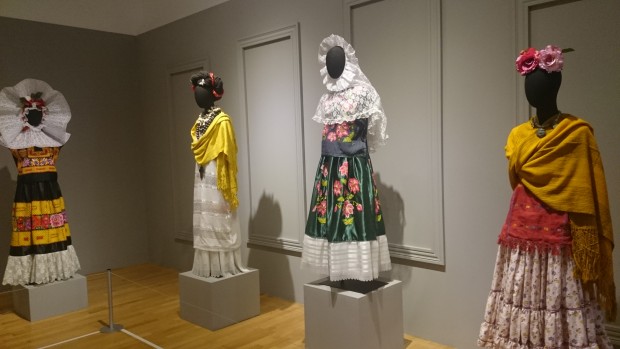
Part of the exhibition shows some of her original traditional and colorful clothes, her trademark. (Radwa Ashraf)
Another section shows some of her hand-written letters, nude portraits, some still life paintings, and many of the portraits where she drew Rivera, the most famous one is “Diego, Me & Senior Xolotl” where she drew Rivera as her child, the way she always saw him.
Besides the paintings, the exhibition had many wonderful pictures taken of her during different stages through her life, some on her sick bed, and others during one of her painting sessions, and some with Rivera. Her colorful Indian trademark clothes, necklaces, and accessories were there as well, as well as the Mexican money bills she and Rivera were printed on.
The exhibition promises leaving you knowing many aspects of Frida’s life, delving into her personal mind and professional space.




















